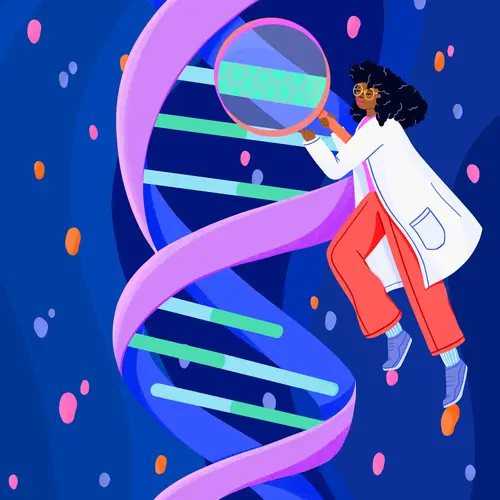Extended-release naltrexone (Vivitrol) is a medication your doctor may prescribe if you are recovering from opioid or alcohol use disorder. It can help lower your cravings for opiate drugs or alcohol with the goal of staying free from them. You take it monthly as a shot at your health care provider’s office.
How Naltrexone Works
When you use opiate drugs, the opioids attach to nerves in your brain that make you feel pleasure. This is what causes you to feel a high. Naltrexone works by attaching itself to those nerves and blocking opioids from attaching. This means if you take opiate drugs while you’re on naltrexone, you won’t feel their effects.
Alcohol also releases chemicals in your brain that attach to those same nerves and make you feel good. If you drink when you’re on naltrexone, you’ll still feel the physical and mental effects of the alcohol, but your desire to drink or to continue drinking should go down since it won’t make you feel as good as it did before. This can help break your cravings for alcohol, since drinking won’t bring as much pleasure.
You Must Stop Opioids and Alcohol Before Starting Naltrexone
It’s very important that you stop using opiate drugs for at least 7 to 14 days before your first dose of naltrexone. This includes street drugs; prescription pain medicines; cough, cold, or diarrhea medicines that contain opioids; or opioid dependence treatments such as buprenorphine or methadone. Since naltrexone blocks the effects of opioids, it could send you into sudden and serious withdrawal if you are not already opioid-free.
If you are still regularly drinking alcohol when you start naltrexone, it won’t harm you right away, but studies show that naltrexone is better at helping you stay alcohol-free if you stop drinking at least 4 days before your first shot.
How Effective Naltrexone Is for Opioid Use Disorder
Several studies show that naltrexone helps people stay opioid-free after they have stopped using opiate drugs. It’s not a silver bullet, but when used consistently and with other supports, it can help you stay sober.
One key study found that people who got naltrexone instead of a placebo shot had more opioid-free weeks throughout the 6-month study (90% overall, compared to 35% overall in the placebo group). Thirty-six percent of those on naltrexone were totally opioid-free during the study, compared to 23% on the placebo.
The study also found that those on naltrexone reported feeling lower cravings for opioids. They stayed in treatment longer, reported more opioid-free days, and were less likely to go back to being addicted to opiate drugs.
A published review of 34 studies done on extended-release naltrexone concluded that it appears to lower opioid use, but it’s hard for many people who want to use it to get off opiate drugs so they can begin naltrexone. It also noted that most people in the studies who started on naltrexone stopped treatment early. Although the medication itself is helpful, these things affect the overall impact of naltrexone.
How Well Naltrexone Works for Alcohol Use Disorder
Studies show that extended-release naltrexone helps people with alcohol use disorder drink on fewer days each month. It also lowers the number of days they drink heavily.
A published review of seven studies found that those on naltrexone on average drank alcohol 2 fewer days each month and drank heavily on 1.2 fewer days each month than those on a placebo.
Naltrexone works better when you stop drinking at least 4 days before you have your first dose. In studies, those who had stopped drinking before starting treatment were more likely to not drink at all while on naltrexone.
Naltrexone Works Best Along With Other Treatments
Naltrexone is not meant to be your only treatment for opioid or alcohol use disorder. Studies show that it works better in helping you stop drinking or using opioids when you also take part in support groups, counseling, or other treatment. Be sure to attend all meetings and educational programs that your doctor recommends.
Naltrexone cannot be combined with opioid treatment medications that contain opioids.
It’s Possible to Reverse Naltrexone in an Emergency
Non-opioid pain medicines or anesthesia are the first choice while you’re on naltrexone, but if you end up in an emergency situation that calls for opioids to manage pain, it is possible to use them. You would need to be in a hospital and closely watched by a doctor who has special training in giving this kind of pain medicine.
The doctor and staff would give you a high dose of a powerful opioid and would pay extra attention to your breathing, maybe using a ventilator.
You Still Can Overdose on Opioids While on Naltrexone
When you start naltrexone, you and the people close to you should know that if you use opioids while on naltrexone, it is possible to accidentally overdose.
Since naltrexone blocks the effects of opioids, it’s important that you don’t take large amounts of opioids to try to overcome the naltrexone and get high.
If you miss your monthly shot of naltrexone or stop the medication, your body will be more sensitive to opioids than it was beforehand. This is also true around the time that your next dose is due. This means you could accidentally overdose if you go back to using the amount of opioids you used before treatment.
It might be a good idea to ask your doctor about naloxone, a medicine that can treat an opioid overdose in an emergency.

